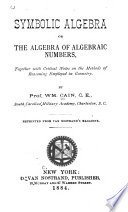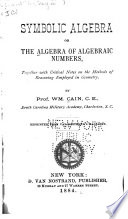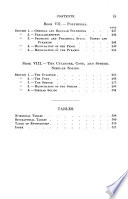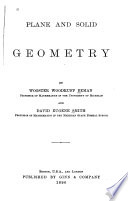 | William Cain - Algebra - 1884 - 144 pages
...in the form, 58 means nothing, though it leads to a true formula, which carries out the theorem that the square on the hypotenuse equals the sum of the squares on the other two sides ; -whereas (— 7)2 cannot be said to represent the square on a side, for — 7x —... | |
 | W. Cain - 1884 - 156 pages
...means nothing, though it leads to a true formula, AB' = (?)'+ (2)', which carries ont the theorem that the square on the hypotenuse equals the sum of the squares on the other two sides ; whereas (— 7)" cannot be said to represent the square on a side, for — 7x —... | |
 | John Homer French - Arithmetic - 1889 - 512 pages
...ratio, sup- » posed to be divided, which is 25. 3 X 6 ft. = 1 8 ft. ; and 4 x G ft. = 2 4 ft. Since the square on the hypotenuse equals the sum of the squares on tbe base and perpendicular (page 336), the area of the 25 equal squares is 900 sq. ft., and the area... | |
 | William James Milne - Algebra - 1893 - 326 pages
...92. Let x — length of hypotenuse ; x — 24 = length of base ; x — 3 = length of perpendicular. The square on the hypotenuse equals the sum of the squares on the other two sides. Therefore, Uniting, Solving, 93. Let then, Simplifying, From (2), or, Place (1) x2... | |
 | Wooster Woodruff Beman, David Eugene Smith - Geometry - 1895 - 344 pages
...embodied in the following exercise. 8. EQUALITY OF POLYGONS. Theorem 8. In a right-angled triangle the square on the hypotenuse equals the sum of the squares on the other two sides. Given the right-angled A ABC, ZC being right. To prove that a2 + b2 = c2. Proof. 1.... | |
 | Wooster Woodruff Beman, David Eugene Smith - Geometry - 1895 - 346 pages
...y)2 + (x - y)2 = 2 (x2 + y2). 2. (x + y)2 - (x - y)» = 4 xy. Theorem 8. In a right-angled triangle the square on the hypotenuse equals the sum of the squares on the other two sides. Given the right-angled A ABC, ZC being right. To prove that a2'+ b2= c2. Proof. 1.... | |
 | Wooster Woodruff Beman, David Eugene Smith - Geometry, Modern - 1899 - 265 pages
...Proportion, Book IV. PLANE GEOMETRY. [BK. II. PROPOSITION VIII. 156. Theorem. In a right-angled triangle the square on the hypotenuse equals the sum of the squares on the other two sides. EF Given the right-angled A ABC, ZC being right. To prove that a2 + b2 = c2. Proof.... | |
 | Wooster Woodruff Beman, David Eugene Smith - Geometry - 1899 - 412 pages
...geometrically that (x + y)2 — (x - yf = 4 xy. PROPOSITION VIII. 156. Theorem. In a right-angled triangle the square on the hypotenuse equals the sum of the squares on the other two sides. M EFG Given the right-angled A ABC, ZC being right. To prove that a? + 62 = c2. Proof.... | |
 | Wooster Woodruff Beman, David Eugene Smith - Algebra (Elements) - 1900 - 460 pages
...extend the idea of number to include the surd. Then v2 satisfies the equation. We can represent V 2 by the diagonal of a square whose side is one unit...solution is impossible or we must extend the idea of niunber to include the negative number. Then x = — 2 satisfies the equation. We can represent such... | |
 | Alvord D. Robinson - Arithmetic - 1902 - 572 pages
...the Pythagorean proposition, because Pythagoras was the first to demonstrate it. It is often stated, The square on the hypotenuse equals the sum of the squares on the other two sides. REGULAR POLYGONS. A polygon is a plane figure having many sides and many angles. A... | |
| |